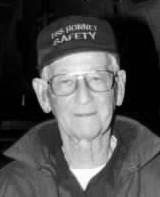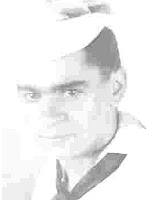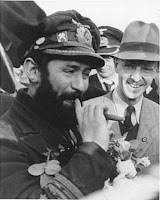Brushy Creek Journal
Friday November 11, 2016
Partly Cloudy 58°F/14°C in Cedar Park, Texas
Buongiorno,
The first veteran
who comes to my mind every November 11th is my father, Charlie
Botula. That’s
 |
| Lt. Charles Botula, Jr. |
After I retired in
2004 following a long career in broadcast journalism and government service, I
set about writing a book about my dad’s wartime experiences. Last summer LST 920: Charlie Botula’s Long, Slow
Target! was published by Amazon Books. (Christmas
shopping hint!). During the course of my research and writing I was
fortunate enough to meet and talk to a number of the veterans who either served
with my dad aboard LST 920, or survived the U boat attack on its sister ship,
LST 921. Very few of them survive in
2016. The final chapter in the book is my Epilog, an update on the sailors I
came into contact with during this project. I would like to share it with you
on this Veteran’s Day:
LST 920: Charlie Botula’s Long, Slow Target!
Epilogue
These are
not dark days! These are great days; the greatest days our country has ever
lived.
Winston
Churchill
Charles
and Mary Botula returned to Riverhead, N.Y. early in 1946. After moving five
times in eleven months as they struggled with the post-war housing shortage,
they bought a home on East
 |
| Skip and Charles Botula 1945 |
 |
| Mike and Packy Botula 2016 |
My
brother Packy and I went through the local schools and graduated from Riverhead
High School. I graduated in 1958 and embarked on a career in radio and
television. My brother Charles, who I had given the life-long nickname of Packy, graduated in 1963, went on to the
State University of New York, Buffalo, earned a commission in the U.S. Air
Force and was awarded the Distinguished Flying Cross twice during the Vietnam
War. During a later assignment Packy Botula flew Air Force Two, the aircraft
designated to fly the Vice President of the United States. During his tour, he
numbered Vice Presidents Walter Mondale and George H.W. Bush among his
passengers. Charles and Mary were role models for their sons and other family
members of the next generation. Charles’ godson, Bernard Botula, my cousin,
shared the same birth date with dad – October 23rd. Bernie was born
in 1929, the year of the great Wall Street Crash and like so many in my family,
came of age during the Great Depression and World War 2. My father was the first
member of his immigrant family to graduate from college. His godson, Bernard
Botula was the first to earn an appointment to the U.S. Naval Academy at
Annapolis, Maryland. He was commissioned in 1954 and assigned to one of the
nation’s first nuclear submarines.
The LST
920’s Captain, Harry Neil Schultz remained in the Navy after the war,
eventually
 |
| Harry Schultz |
Lieutenant
John W. Enge, the commanding officer of the ill-fated LST 921 was given command
of LST 78, which took part in the invasion of Okinawa along with LST 920. After
the war, Enge returned to Alaska where he met his wife Carol and became a
leader in the Alaska fishing industry. Enge died in 2010 at the age of 95.
Ensign
Don Joost, who was severely wounded in the torpedoing of LST 921 was rescued by
the British and taken to a hospital in Falmouth for treatment before being
quickly transferred to another tank landing ship, LST
| Ensign Don Joost |
Don Reed, LST 920’s Communications Officer and
the ship’s last commanding officer returned to California following the war,
but never ventured far from his Navy experiences. When I met him in 2003 he was
active in his church and serving as a docent aboard the USS Hornet, the World
War aircraft carrier/museum ship in Alameda, California. Reed stayed active in retirement but our
communications tapered off and finally ended around 2011. I had brought my son,
Michael, with me to meet Reed at that time. Our meeting with Reed provided a
real personal connection for my son since his grandfather had died 12 years
 |
| Ensign Don Reed LST 920 |
Seaman
Larry Biggio, who had contracted Yellow Jaundice in the Pacific worked diligently
after the war to ensure his old ship’s place in history. Biggio established a
web site dedicated to the memory of LST 920, which became a labor of love for
him and the other shipmates who contributed photographs and articles in the
effort to perpetuate the memory of LST 920. When he finally retired, Biggio
turned his files over to me. Much of his research has been utilized in the
writing of this book.
Engineering
officer Jerry Gerard, the aspiring artist who had done the pencil sketch of my
dad at Normandy, was transferred from the LST 920 following the ship’s return
from Europe. After the war he put his artistic ambitions aside and embarked on
a career as an engineer for a petroleum company. Retirement found Gerard back
in his home town of Warsaw, Indiana, still active and enjoying a good golf
game. Gerard was still proud, in his
eighties, that his old Navy uniform still fit him. He was touched that my dad
kept his sketch among his souvenirs.
Motor
Machinist’s Mate Joe La Rock returned to his home town near Pittsburgh,
Same old story, La Rock wrote in his remembrance letter in 2006, Boy meets girl. We fell in love and were
married on February 2, 1948 by my minister. According to La Rock, the
minister was the same pastor who had baptized him as an infant. My minister in Pennsylvania had married my
mom and dad, baptized me and then, married Minnie and me before he retired. We
now have been married 58 years and have three wonderful and successful girls. La
Rock began his post-war career earning 79 cents an hour as a laborer but
eventually worked his way up in a federal agency and retired 34 years later as
a deputy director.
 |
| Seaman Joe LaRock |
LST 921
Motor Machinist’s Mate John Abrams, who struggled with Seaman Lloyd Meeker to
escape from the engine room, survived the war and went home to Renssalaer, NY.
In his retirement, he took on the task of being his ship’s historian. Abrams
provided a vivid first-hand account of his escape from his doomed ship.
Lloyd
Meeker, who escaped from LST 921’s engine room along with John Abrams returned
to Redmond, Oregon after the war. He shared his recollections of his Navy
service in a long letter in 2008.
Ensign
Bob Naden, who replaced Jerry Gerard as engineering officer when the ship
returned from Europe, came home from the Pacific and returned to civilian life.
Naden went on to serve for many years in the state government of Iowa.
The first
commander of the U 667, Heinrich-Andreas Schroeteler was transferred to another
U boat before his ship’s encounter with Convoy EBC 72. He was captured by the
Allies and spent the rest of the war in a POW camp until Germany’s surrender in
1945.
 |
| U 667 Captain Schroteler |
The LST
920’s Navy career spanned the years 1944 to 1946 and then the ship joined the Mothball Fleet in Suisun Bay near San
Francisco before it’s reincarnation in civilian service as part of a fleet of
service vessels for a Brazilian Petroleum Company.
Wartime
British Prime Minister Winston Churchill, who is considered the “father of the
LST,” was turned out of office as the war ended in 1945. But made one more
appearance on the world stage as Prime Minister in 1951 to 1955. Churchill died
in 1965, leaving an indelible mark on history.
The world
that these men knew had changed forever.
Some veterans like Charlie Botula freely shared their experiences with
friends and family. It was clear to those who knew my father, that his Navy
service was a high point of his life.
Other returning veterans dealt with the horrors of war by shutting them
out, putting their memories behind them and moving on. As the years passed,
time began to thin the ranks of those who had served in World War Two. Children and grandchildren wanted to know
more about their parents and grandparents, uncles, brothers and I’ve not talked about this in 60
years! one LST sailor told me, I just wanted to put it all behind, but I now
realize that these are stories that need to be told. Charles Botula and his
shipmates made history. We must not lose
sight of their deeds. As Winston Churchill so aptly put it:
 |
| British PM Winston Churchill |
“The
destinies of two great empires seem to be tied up in some god-damned things
called LSTs.”
Postscript:
After LST 920:
Charlie Botula’s Long, Slow Target! published, I got a letter from a reader
who informed me that the un-named ship’s cook from the LST 921 was a long-time
friend of his. Survivors John Abrams and Lloyd Meeker had both told me about
their badly injured shipmate that they had helped rescue from the sinking of their
ship, but they never identified him.
Only by chance did I learn that the ship’s cook, Charles Watson, a
seaman from the state of Washington not only survived the war after losing a
leg and suffering multiple leg and arm fractures, but it still heartily
enjoying life at age 95. I talked to Charley Watson after I received Curt
Pederson’s letter. And I’m happy to report that Charley Watson is still with us
today, joining the rest of us in obvserving Veteran’s Day 2016 – 72 years after
that U boat attack in the Dover Channel.
Ciao,
MikeBo
[Mike Botula is the author of the wannabe best-seller LST
920: Charlie Botula’s Long, Slow Target! (Amazon Books) MikeBo’s Blog
is a wholly owned subsidiary of his web site www.mikebotula.com ,
and is linkedto Facebook, Twitter and
Google Plus!]
© By Mike Botula 2016